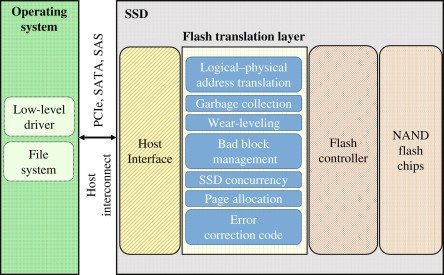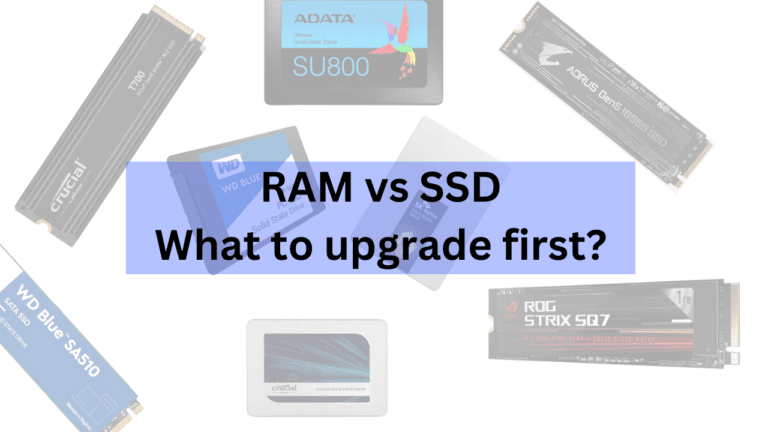In this highly computing world, memory plays a very important role in storing data and sending it to the required programs in a very efficient manner. It is a foundation for the storage of data, ensuring smooth and efficient operations. A computer would never be able to perform even a simple task without memory as there would be no place for it to store and retrieve the data. From the moment of booting up to running complex tasks on a system, memory plays a very vital role. It directly affects the performance and capabilities of computer systems.
Memory in any operation acts as a temporary storage space for data and instructions that the CPU needs to access through system buses. It is a bridge that maintains the speed gap between the high-speed processor and the relatively low-speed storage devices such as hard drives.
The role of memory includes the following:
- Storage of Instructions: The programs, when shifted from the ready state, it is stored in the memory in the form of code instructions.
- Data Management: When the CPU fetches and runs an instruction, it might require some data that is stored in the memory. So we can say that memory also stores the data required for processing (in the stack created). It sometimes also stores the final data.
- Performance Enhancement: More faster frequency of the memory allows better multitasking and faster program execution.
- Buffering: Memory buffers handle the continuous data transfer between I/O devices with different speeds.
Volatile vs Non-Volatile Memory
Memory based on whether it retains the data after power is off or not is classified into two types.
1. Volatile Memory
Volatile memory is the memory type that needs power to store the data. As soon as the power turns off, all the data stored in a volatile memory is lost. It is used for temporary data access. The biggest example of volatile memory is your smartphone’s or computer’s RAM. It just erases everything as soon as you shut your device down.
Characteristics of volatile memory
- It requires continuous power to retain the information in the memory.
A volatile memory has a higher speed of access, enabling quicker and easier read and write. All the data stored in a volatile memory is lost as soon as the computer shuts down. - A volatile memory, in general, is used by the CPU for ongoing operations and processing tasks.
- It is not good for long-term data storage.

Types of volatile memory
RAM (Random Access Memory) – RAM is a general-purpose volatile memory that is used to store the instructions that a CPU register fetches. It also stores the additional data required for program execution.
DRAM – DRAM, also known as Dynamic RAM, as the name suggests, is dynamic and requires constant refreshing. It stores the data using capacitors. It is slower as well as cheaper than SRAM. It is mainly used in system memory.
SRAM – SRAM, also known as static RAM. It makes use of flip-flops to store the data. It doesn’t require constant refreshing. It is faster as well as more expensive than DRAM. It is mainly used in cache memory.
Cache Memory – Cache memory is a very fast memory located near the CPU. It stores the frequent data that has been accessed to skip the multiple reads into the main memory. It speeds up the operation of the CPU. Cache memory is mostly built using SRAM.
Applications of Volatile Memory
It is mostly used for running operating systems and application software. It stores the temporary data and page table during program execution. It also stores buffers and queues for processing. A CPU cache catches data to reduce latency in data access.
Advantages
The data access in volatile memory is very fast. It improves the system’s performance and responsiveness. It also allows multitasking by keeping multiple programs and their records in the memory.
Disadvantages
The main disadvantage of volatile memory is that it is temporary and loses all the data once the system is powered off. Besides, it is more expensive than non-volatile storage. It also has very limited storage capacity if we compare it to the secondary storage.
2. Non-Volatile Memory
The other type of memory is the non-volatile memory. This type of memory retains the data in any conditions and doesn’t matter if the power supply has been cut off. It is used for long-term storage of data programs.

Characteristics of Volatile Memory
A non-volatile memory retains the data even if the power is turned off. It is generally used for keeping files, data, system software, etc. It is slower than volatile memory, but it is important for booting and storing files. It can be used in both external and internal storage media.
Types of Non-Volatile Memory
ROM (Read Only Memory) – It contains the permanently written data. It is used to store the firmware.
PROM (Programmable ROM) – It is a type of ROM that can be programmed by the user. Once programmed it behaves like ROM.
EPROM (Erasable Programmable ROM) – It can be programmed and erased using ultraviolet light and reprogrammed.
EEPROM (Electronically Erasable Programmable ROM) – EEPROM is a ROM type that can be programmed and erased electronically. It is generally slower than RAM but more pliable than EPROM.
Flash Memory – It is a type of EEPROM used in USB drives, memory cards, and SSDs.
SSD (Solid State Drive) – It uses flash memory, which is a type of EEPROM for fast data access. It also ensures durability.
HDD (Hard Disk Drive) – HDD consists of magnetic particles over the spinning disk. It has high capacity and is cheaper than SSDs but is slower.
Optical Discs – It uses laser technology to access and write the data. It is used in media distribution.
Application of non-volatile memory
The main application of non-volatile memory is the storage of operating systems, user data, and applications. BIOS is stored in ROM. Besides, it is also used in portable data storage such as USB sticks.
Advantage
It retains the data even without the power. It is good for long-term use. It has a variety of options available. It is essential for booting the operating system.
Disadvantages
The access and write speed of non-volatile memory is relatively slower than that of volatile memory. Some mechanical non-volatile memory is prone to damage and data loss. It has limited write cycles.
Conclusion
Both Volatile as well as non-volatile memory work in sync to ensure that a system runs efficiently. Volatile memory is responsible for responsiveness, while non-volatile memory is responsible for data retention. Understanding their roles in different scenarios is fundamental to learning how a system stores, operates, and manages data.





![How to Set up External Backup in Windows? [Complete Guide]](https://storedbits.com/wp-content/uploads/2024/10/setup-external-backup-in-windows-768x433.png)
